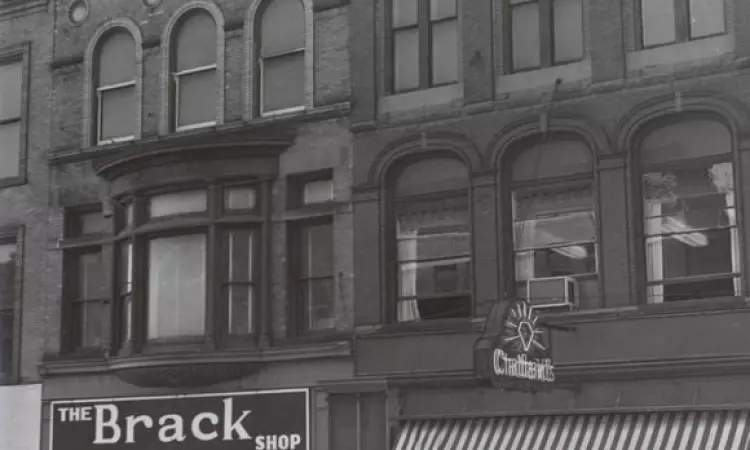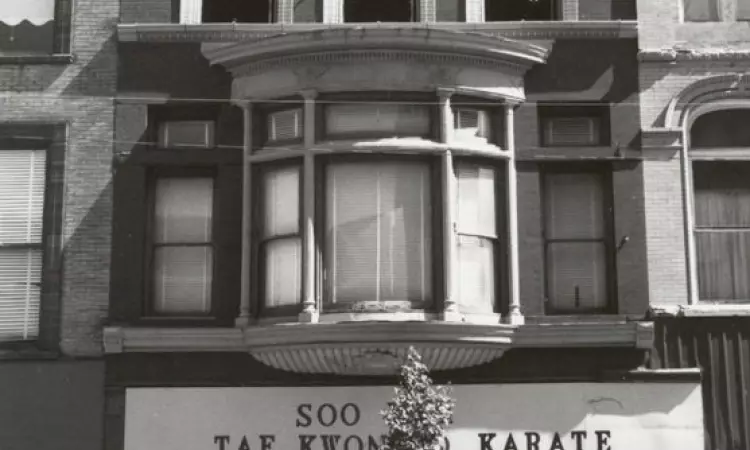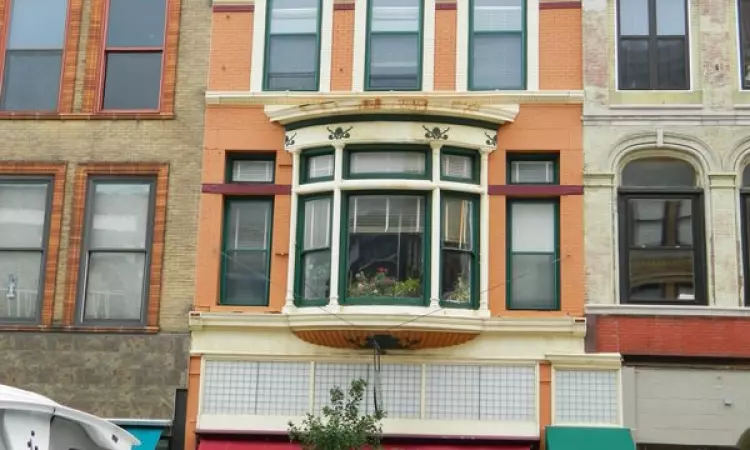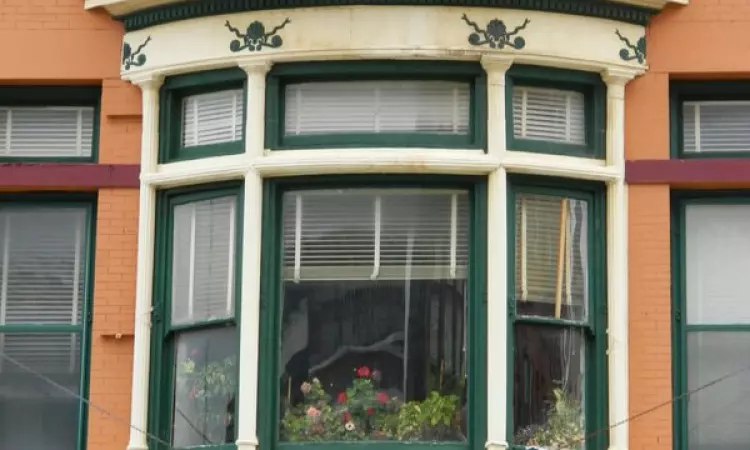McGregor Building
Built: 1901
Architect: Arthur L. Pillsbury
Arthur L. Pillsbury
Arthur L. Pillsbury was born in Bloomington on November 29, 1869. He grew up in Bloomington and attended schools in Normal while his father served as principal of the Model School at Illinois State Normal University (today Illinois State University). In 1880, the family moved to Springfield where his father became principal at Springfield High School. Pillsbury completed high school there and began his higher education at Harvard University, graduating in 1892 with a degree in Engineering. Subsequently, he then moved back to Illinois to attend the University of Illinois in Champaign-Urbana for its architecture program, which was the first university in the United States to offer a four-year architectural degree in 1890. He graduated with a degree in architecture in 1895.. After graduation, Pillsbury traveled to Chicago, Toledo, Buffalo, and New York where he worked for a short time and explored the architectural works of these cities. When he moved back to Bloomington in 1898, he was the city’s first university-trained architect. He also became one of Illinois' first licensed architects in 1897, a process established through the University of Illinois architecture program.
In 1898, Pillsbury married Daisy Deane Hill, and they had one daughter, Frances. Throughout his career, Pillsbury designed and renovated approximately 435 homes, 104 schools, 73 businesses, 32 churches, 17 banks, and 16 garages, alongside other architectural projects. Over a dozen new buildings in downtown Bloomington were designed by Pillsbury in the first few years after the Downtown Bloomington Fire of 1900.
In addition to designing notable buildings in Bloomington, he was active in community organizations including the Freemasons, American Institute of Architects, Bloomington Country Club, a member of Second Presbyterian Church, and the University of Illinois Alumni Association. He also donated his time as the McLean County Chairman for the State Council of Defense. With this position, he was responsible for insuring that non-essential construction projects would not draw supplies that would otherwise be used for the war effort during World War I. Tragically, Pillsbury died in a car accident at the age of 55 while returning from a University of Illinois football game. He is buried in Evergreen Memorial Cemetery in Bloomington, IL.
Style: Neo-Classic (1900-1920)
Neo-Classic (1900-1920)
Neo-Classicism is based on the Greek and Roman architectural orders and is used to describe buildings which show classic elements in their design. The style may feature pedimented porticos and large windows with single sashes. Since Greek influence is often stronger in this style, the arch is often not used, and the moldings are often kept simple.
Address: 311 N. Main St
Brief History:
The original structure was destroyed in Downtown Bloomington Fire of 1900
1901 - Building completed for a cost of $15,000. R.C. Rogers Wallpaper Company was the first tenant, along with Bloomington Art Society on the third floor
1905 - Store front redesigned and remodeled
1936 - National Tea Company replaced the Rogers Company, and Kinney Shoes replaced them in 1939.
1960-1974 - The Brack Shop
1986-1993 - Soo Kim's Martial Arts
Artist Harold Gregor (1929-2018) maintained studios on the building’s upper floors.
2022 - Spice Works, opened in the first floor retail space.
Architectural Description:
Three-story gray pressed brick, Neo-Classic style building. The first floor is comprised of aluminum and glass, with a recessed entryway.
The second floor features a central oriel and bowed window flanked on either side by transomed windows and fluted columns. The window cornice has medallion fascia and dentils.
Tin string courses delineate first from second floor and second from third floors.
The third floor introduces three round arched windows with molded brick edges. This is broken down into two parts by string course. Top sections are graced by terra cotta medallions and decorative brick work.
It has a cornice of laurel showing scroll brackets and dense corbeling above.



